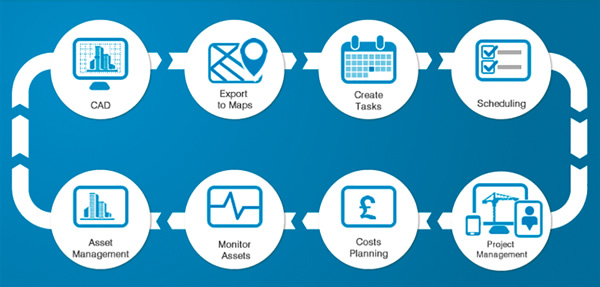This summer, a team of subject matter experts from a company that provides intelligent industry solutions visited one of the largest mining sites in the world. The team's goal was to deliver to this mining operation new intelligence by actionable pumps and systems data using Web-based technology—the Internet of Things (IoT). After arriving at the site for their project kick-off meeting and gathering with key stakeholders, the team recapped the project objectives: energy savings, reduced downtime, optimized workflow and increased product profitability. As in most meetings of this nature, the jackpot question was raised: "How much savings will you deliver us? We have already accomplished a lot. We've installed all possible flow meters, pump controllers, SCADA automation and have everything perfectly under control. We really don't have any problems."
What Is the Internet of Things?
Like those of many other operations, these stakeholders were relying on the use of flow, pressure and water level sensors to monitor their mines and the performance of critical equipment—hardly a new idea to the mining industry. New technologies and the use of the Internet, however, are streamlining this process and making it more advanced than ever. To convince this particular mining operation to consider the Internet of Things (IoT) as the latest generation of sensing technology, the team had to address the question, "What is the Internet of Things, and how will it add value to our operation?" In a no-nonsense industry focused on cost-effective production, facts are key, and the technology to support actionable data is currently on a fast track that can be summarized in a few points.- The cost of sensors, such as radio-frequency identification (RFID) we see today used as SMART tags, decreased to a point that they can be used routinely for one-off disposable functions.
- The cost and difficulty of installation—including integration into full monitoring systems—also decreased.
- Mass sensing and monitoring are now integrated with data to provide powerful insights into facility and equipment operation in intuitive graphical displays.
- Sensors and information can support multiple monitoring applications and users.
- With collaboration and security, technology enables different teams to work together efficiently.
Using the IoT to Manage Water in Mine
A simple scenario of managing water in a mine might help to illustrate this point. Sensors are employed to report water levels, flows and pressure in critical areas and to monitor critical pumps and outlets. Each sensor is usually hardwired to a central computing facility with expensive applications that provide reports to a few selected key individuals. This setup can pose a variety of problems, including cost constraints, lack of flexibility and difficulty in adequately training staff to use the applications. These challenges can contribute to a potentially dangerous environment and increased risk of water breaking through, flooding and missed production targets. The cost of unexpected flooding, even in localized areas, or unbalanced flows in pump systems accumulates with time, especially if machinery becomes damaged or pumps begin to run out of their best efficiency points (BEPs). These inefficiencies waste energy, reduce equipment life and put added pressure on maintenance efforts. While the mining stakeholders mentioned above assumed their operation was free of problems, existing monitoring technology has its limits. Choosing a monitoring technology and method is a balance of risk and cost.IoT Sensors & Other Tools
Unlike standard equipment, IoT sensors are designed to work with low power, and each sensor costs $50 or less. More important, they are wireless, making them intrinsically safer than other options. Using automatic connection via one of several low-power wireless network types specially designed for industrial purposes, IoT sensors have no installation costs or limitations associated with fixed cable access. The networked element allows multiple access to any sensor with closed secure access, so that a central control room, a local supervisor and a roaming pumping engineer, for example, can simultaneously use the data feeds in their individual applications. Reuse of existing data sources into one common IoT platform (Graphics courtesy of the authors)
Reuse of existing data sources into one common IoT platform (Graphics courtesy of the authors)
